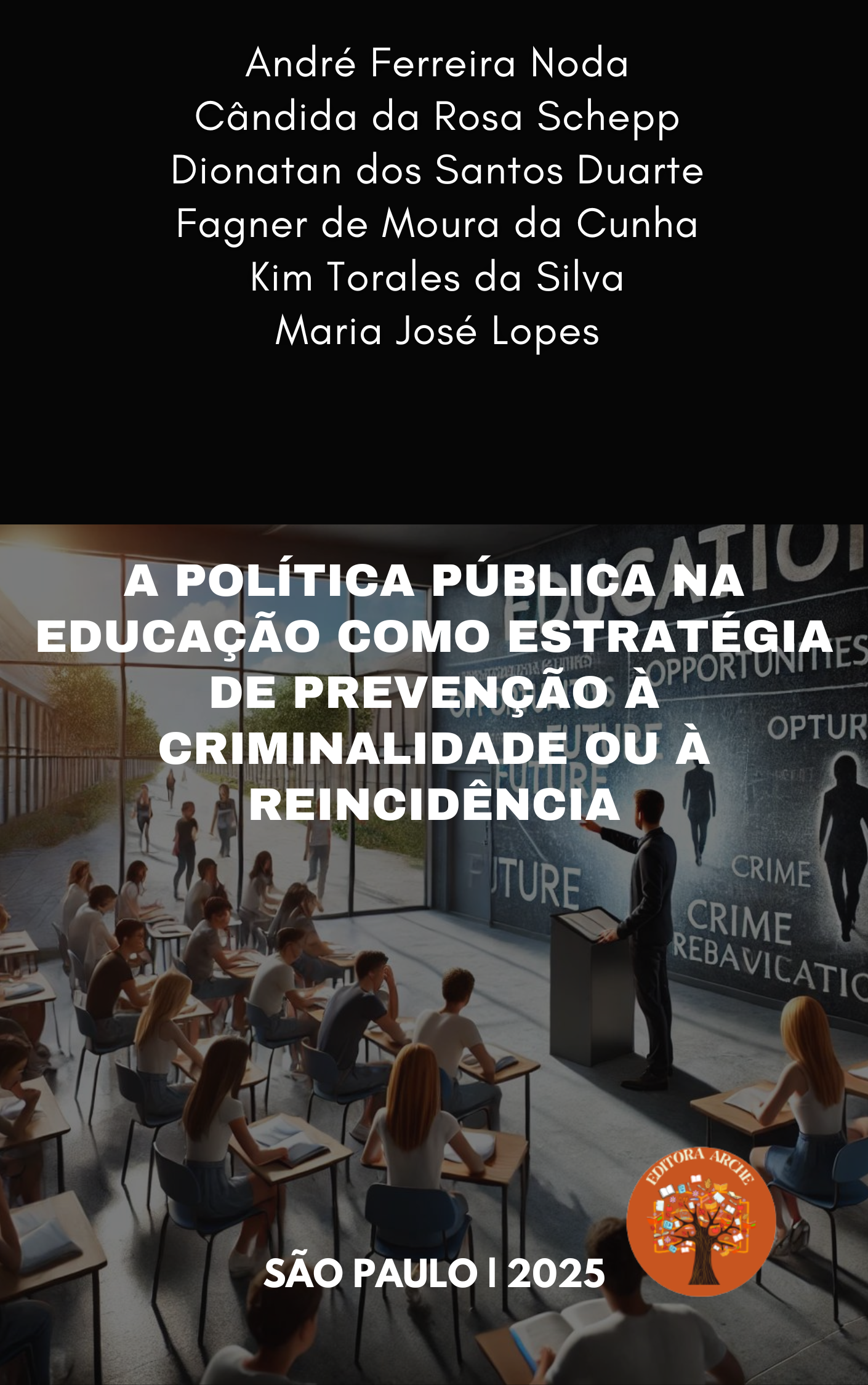PUBLIC POLICY IN EDUCATION AS A STRATEGY FOR PREVENTING CRIME OR RECIDICTING
Keywords:
Crime. Social Vulnerability. Education.Abstract
The relationship between education and crime is one of the most debated topics in the field of social, legal and educational sciences, since it directly affects public safety and social stability. Access to quality education has been widely recognized as one of the essential factors for preventing crime and reducing recidivism, and it is necessary to formulate effective public policies that promote social inclusion and the reintegration of vulnerable individuals.
The book "Public Policy in Education as a Strategy for Preventing Crime or Recidivism" aims to provide an in-depth analysis of how education can serve as an effective mechanism for preventing and combating crime, addressing the intersection between social vulnerability, education and public safety. Through the presentation of criminological theories and case studies, the aim is to present solutions based on successful experiences, as well as to point out challenges and perspectives for the implementation of educational policies aimed at preventing crime and social reintegration in Brazil.
The structure of the book is organized into three main chapters, each addressing fundamental aspects for understanding the proposed theme.
Chapter 1: Social Vulnerability, Education and Crime: Fundamental Concepts and Their Intersections
The first chapter establishes an essential conceptual basis for the discussion on the relationship between social vulnerability, education and crime. It begins with the definition of social vulnerability, analyzing its main determinants, such as poverty, economic inequality, social exclusion, low education and lack of access to essential public services. The implications of these conditions in the formation of criminal trajectories are also discussed, highlighting how individuals exposed to risky environments tend to be more likely to be involved in criminal activities.
Education, in turn, is presented as a crucial factor in crime prevention, as it enables the development of cognitive and socio-emotional skills, increases opportunities for insertion in the job market and strengthens fundamental values such as respect for social norms and citizenship. The chapter also discusses the impacts of school failure and dropout, which can significantly contribute to the increase in juvenile crime, and proposes strategies to mitigate these problems. The second chapter, “Theories of Crime,” presents a comprehensive review of the main criminological theories that help to understand the phenomenon of crime and its relationships with education. Initially, classical theories are addressed, such as Robert Merton’s anomie theory, which explains crime as a consequence of the tension between cultural goals and institutional means to achieve them; Edwin Sutherland’s differential association theory, which argues that criminal behavior is learned through social interaction; and Howard Becker’s labeling theory, which highlights the role of social institutions in the criminalization of individuals. In addition, the chapter explores contemporary approaches, such as critical criminology, which analyzes power relations and social inequality in the definition of crime, and situational prevention theories, which emphasize the importance of environmental interventions to reduce criminal opportunities. These theories provide an essential theoretical basis for formulating effective public policies to combat crime through education.
Chapter 3: Educational Policies and Public Safety: Strategies to Prevent Crime and Promote Social Reintegration in Brazil
The third chapter, entitled “Educational Policies and Public Safety: Strategies to Prevent Crime and Promote Social Reintegration in Brazil”, presents an overview of educational policies aimed at preventing crime and the social reintegration of individuals released from the prison system. Successful national and international experiences are analyzed, including education programs in prison units, vocational training initiatives and inclusive education projects for vulnerable populations.
The chapter also discusses the need for an intersectoral approach, involving schools, families, communities and government agencies, to ensure the effectiveness of crime prevention strategies. The chapter highlights the importance of public policies that promote access to quality education, contributing to the formation of a more just and safe society.
In the end, the book offers a comprehensive and well-founded view of the relationship between education and crime, providing support for improving public policies in the area.
André Ferreira Noda
Cândida da Rosa Schepp
Dionatan dos Santos Duarte
Fagner de Moura da Cunha
Kim Torales da Silva
Maria José Lopes
Downloads

Downloads
Published
How to Cite
License
Atribuição CC BY
